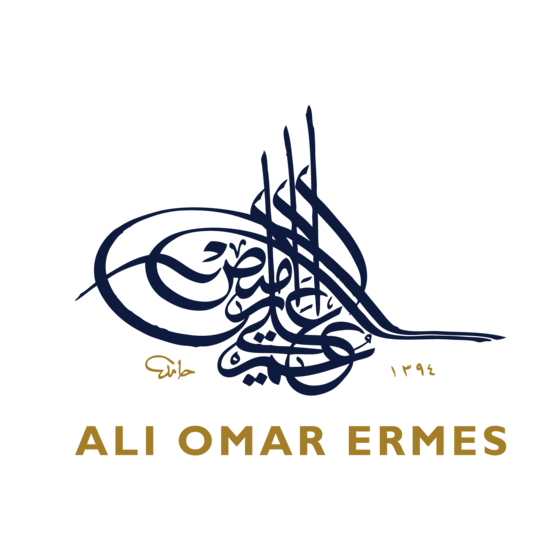Science – The Islamic Legacy
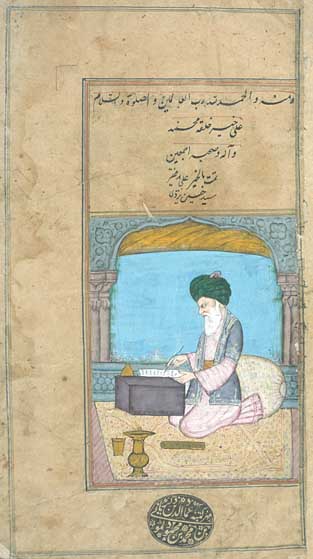
Written by Paul Lunde
Illustrated by Michael Grimsdale
Additional illustrations courtesy of Ambrosiana Library
The Arabs were the inheritors of the scientific tradition of late antiquity. They preserved it, elaborated it, and, finally, passed it on to Europe.
The story of how this came about is far from simple, and much research needs to be done before its details are completely understood, but the broad outlines are clear.
When Egypt, Palestine, Syria, Iraq, Asia Minor and Persia fell to Islamic forces in the seventh century they included a heterogeneous population. Although the cultivated classes of the former provinces of the Byzantine Empire spoke Greek, the people spoke a number of other languages -Coptic in Egypt and various Aramaic dialects in Syria and Iraq. These populations were for the most part Christian. In Persia, the majority language was Pahlavi an earlier form of the language spoken there today - and the state religion was Zoroastrianism, with substantial Christian minorities and a few centers of Buddhism.
Throughout this immense area, there were two main scientific traditions. The first, and by far the most important, was that of Greece. The second was that of India, strongest in Persia because of the geographical proximity of the two countries.
At a surprisingly early date, the Arab ruling dynasty of the Umayyads, with its capital at Damascus, evinced an interest in Greek science. The little Umayyad audience hall and bath of Qasr 'Amra, built in the Syrian desert around A.D. 711 - only 79 years after the death of the Prophet Muhammad - contains, on the inside of the dome, a painted representation of the zodiac made on a stereographic projection, perhaps showing a familiarity with the methods of Ptolemy. The same room contains paintings of personifications of History, Poetry and Philosophy; each figure is labeled in Greek.
The interest of the Umayyads in Greek science attested by the paintings at Qasr 'Amra is confirmed by early Muslim historians, who record the experiments in alchemy made by Khalid ibn al-Yazid, a grandson of the first Umayyad caliph Mu'awiya.
Astronomy and alchemy were thus the first sciences to preoccupy the Muslims. It is noteworthy that they were also typical of the interests of the Greek scholars of late antiquity, particularly of those in Alexandria. In fact, it was to be this tradition, with its emphasis on mathematics, physics, astronomy and medicine, that was to be most fruitfully elaborated by Muslim scientists.
Although the great library of Alexandria, repository of the learning of the classical world, no longer existed at the time of the Arab conquests, the works of many of the Greek scholars who studied there now exist only in Arabic translation. How did this come about? How did the Arabs, who had little or no direct contact with Greek science, and in any case were unfamiliar with the Greek language, gain their very detailed knowledge of it?
The answer to this question lies in the continued presence of a Greek-speaking (or reading) educated class among the subject populations of the Muslim empire. When the Umayyad dynasty-the language of whose administration, until A.D. 699, was Greek - was supplanted by that of the Abbasids in A.D. 750, the center of the empire shifted eastward. A new capital, Baghdad, was built in Iraq on the banks of the Tigris. Here, not far from the old Persian capital of Ctesiphon, the character of the empire changed.
Although the Umayyads had made use of non-Arab, Greek-speaking civil servants, they had remained firmly Arab in their tastes and philosophy of rule, and had made little effort to attract the subject population to the religion of Islam. Now, all this was changed; the Abbasids from the beginning conceived of an Islamic polity based on religious affiliation rather than national origin. Baghdad became an international city, where Persians, Indians, Greeks, Sogdians - from beyond the Oxus- Armenians, Turks, Jews and Arabs lived side by side. This inevitably led to a mingling of varied intellectual traditions; at the same time, the language of the court - and increasingly of the people -was Arabic.
The Arabic-speaking intelligentsia of Baghdad were of course aware, through their contacts with Greek-speaking Muslims and Christians, of the great achievements of classical scientists. The university of Gondeshapur, the great intellectual center of Sassanid Persia, was not far from Baghdad. When the Council of Ephesus in 431 excommunicated Nestorius, his followers sought refuge in Persia, where the Sassanid Shahs welcomed them. The Nes-torians brought with them a knowledge of two sciences which were, with their help, later to be cultivated by the Muslims -medicine and astronomy.
Another Christian sect, the Monophysites, fleeing Byzantine persecution 20 years later, also settled in Persia, as well as in Syria, where they founded schools at Edessa, Nisibis, Antioch and Beirut, where law and rhetoric were particularly studied. These two disciplines were also later to become fruitful areas of Muslim scholarship.
There was, therefore, no complete rupture between the late classical and the Muslim world, as far as the scientific tradition was concerned. A Greek-speaking physician like Alexander of Tralles, who was active at about the time the Prophet Muhammad was born - around A.D. 570 - wrote a standard medical textbook which was later translated into Arabic and eventually from Arabic into Latin, and had considerable influence on medieval European medical practice. One of the most striking confirmations of this continuity is the fact that the Alexandrian Academy survived, albeit in shadowy form, into Islamic times, when it was moved to Antioch, where enrollment fell until only one professor and two students were left. One of these students in turn taught one of the foremost Abbasid translators, while the other taught a student who in turn instructed one of the greatest Arab philosophers, al-Farabi.
The Indian scientific tradition mingled with that of Greece at Gondeshapur and other centers of Christian learning in Persia. The Indians were particularly concerned with mathematics, astrology and the scientific study of grammar. About the year 600 - during the lifetime of the Prophet Muhammad -Indian mathematicians developed the symbol zero and the system of place notation. This invention, first mentioned in the Islamic cultural area in a Syriac text written in A.D. 662, when the Umayyad caliph Mu'awiya was ruling in Damascus, revolutionized the study of mathematics and made possible the great achievements of Muslim mathematicians.
It was during the early Abbasid period, however, that the tentative beginnings made under the Umayyads blossomed into a true scientific renaissance. Several of the early Abbasid caliphs made a systematic effort to translate Greek and Indian scientific texts into Arabic.
This effort began during the reign of the second Abbasid caliph, al-Mansur, who founded Baghdad and ruled from A.D. 754 to 775. Al-Mansur sent embassies to the Byzantine emperor to ask for Greek mathematical texts - in particular for the Elements of Euclid; the famous al-Ma'mun, later did the same. Ibn Khaldun, writing in North Africa in the 14th century, but making use of a wide variety of earlier sources, describes the remarkable efforts made by these caliphs to enrich the intellectual life of the Muslim community:
When the Byzantine emperors conquered Syria, the scientific works of the Greeks were still in existence. Then God brought Islam, and the Muslims won their remarkable victories, conquering the Byzantines as well as all other nations. At first, the Muslims were simple, and did not cultivate learning, but as time went on, and the Muslim dynasty flourished, the Muslims developed an urban culture which surpassed that of any other nation. They began to wish to study the various branches of philosophy, of whose existence they knew from their contact with bishops and priests among their Christian subjects. In any case, man has always had a penchant for intellectual speculation. The Caliph al-Mansur therefore sent an embassy to the Byzantine emperor, asking him to send him translations of books on mathematics. The emperor sent him Euclid's Elements and some works on physics.
Muslim scholars studied these books, and their desire to obtain others was whetted. When al-Ma'mun, who had some scientific knowledge, assumed the caliphate, he wished to do something to further the progress of science. For that purpose, he sent ambassadors and translators to the Byzantine empire, in order to search out works on the Greek sciences and have them translated into Arabic. As a result of these efforts, a great deal of material was gathered and preserved.
Other Muslim historians record the arrival of an Indian scientist named Manka at the Abbasid court in A.D. 770, and he seems to have had a considerable influence on the mathematicians and astrologers of Baghdad, although we know little of the precise nature of this influence.
Under al-Ma'mun, a more systematic effort was made to translate Greek scientific texts into Arabic. He founded an institute for the purpose, called the Bait al-Hikma, The House of Wisdom, and staffed it with salaried Christian and Muslim scholars. The work of translation was complex. Christian translators first rendered the Greek texts into Syriac, the language with which they were most familiar. These preliminary versions were then put into Arabic, with Muslim Arabic-speakers correcting them for style.
Muslim scientists were much influenced by the Greek notion that the science of mathematics was the key to all other sciences. Aristotle, whom the Arabs called "The Foremost Teacher," had inscribed above the door of his house: "Let no one enter who does not have a knowledge of mathematics." This could equally well serve as a motto for the House of Wisdom. We have seen that one of the first Greek books brought to Baghdad from Constantinople was a copy of Euclid's Elements. This was translated into Arabic a number of times, as were several of the Greek commentaries upon it, in particular that of the inventor and mathematician, Hero of Alexandria, whose experiments with automata in the third century B.C. were to be so strangely echoed by Muslim scientists. As late as the 13th-century, Nasir al-Din al-Tusi wrote a detailed commentary on the Elements, which was among the first Arabic texts to be printed in the original in 16th-century Italy.
Many other Greek mathematical works found their way into Arabic through the efforts of the scholars at the House of Wisdom and their successors. Euclid, Apol-lonius of Perga, Nichomachus of Gerasa -the magnificent classical ruin presently called Jerash, in Jordan - Menelaus, Archimedes and Theodosius of Tripoli were all translated at an early date, as were works by astronomers like Ptolemy, Autolycus, Dorotheus, Aristarchus, Hipparchus, Theon of Alexandria, Aratus and Geminus of Rhodes. A number of these works were later translated into Latin and Hebrew and thus became known to medieval Europe.
The exact sciences - mathematics, astronomy and optics - perhaps occupied pride of place for Muslim scholars, but the natural sciences, particularly medicine and its ancillary disciplines, were also assiduously cultivated. Again, the first phase was translation of Greek medical writings -particularly those by or attributed to Galen and Hippocrates - into Arabic. There then followed a period of original research by Muslim scientists, often leading to major revisions of the received tradition, and finally a period of codification in which the results of previous research were incorporated into convenient handbooks. Botany, particularly in so far as it was related to materia medica, received its first impetus from an illuminated copy of Dioscorides sent by the Byzantine emperor to the Abbasid court; this fundamental classical work was quickly rendered into Arabic, and many corrections and new plant identifications were added to it, particularly by scholars in North Africa and Muslim Spain. It was in Spain too that the first scientific works on agronomy were composed, works that are a prime source for our knowledge of medieval agricultural techniques in the Muslim world - techniques that were passed to Europe and greatly increased productivity.
Aristotle's work Generation of Animals was early translated into Arabic, and was made use of by al-Jahiz in his amusing Book of Animals, which includes a great deal of linguistic, literary and historical information in addition to passages of accurate, if amusing, scientific observation. Various handbooks of veterinary medicine were also composed, although these have so far received little attention from scholars.
Very few works of Greek science failed to find their way into Arabic during the Abbasid period. For one of the few times in human history, a culture with its own language, religion and customs embarked upon the extraordinary task of translating an alien intellectual tradition into its own language and fitting it into its own conceptual framework. In the process, old errors were corrected, and the experimental method, the basis of all scientific progress, was clearly enunciated. For one of the great achievements of medieval Muslim scientists was their willingness to correct the texts they transmitted. Just as they recomputed the circumference of the earth, and corrected the geographical information in Ptolemy on the basis of their own observations, so they dared question even Aristotle.
The works of Muslim scientists reached medieval Europe through Latin and Hebrew translations, for the most part made in Spain and somewhat later in Sicily. As early as the 10th century, astronomical works were being translated into Latin in Catalonia, and perhaps elsewhere in Spain. Later, during the 12th and 13th centuries, the works of Avicenna (Ibn Sina), Averroes (Ibn Rushd), Avempace (Ibn Bajja) and a host of others were translated into Latin and in the 13th century, at the court of Alfonso the Wise, into Spanish. At the very time that Baghdad fell to the Mongols, in 1258, and the Abbasid caliphate came to an end, scribes in Europe were preserving the Muslim scientific tradition. This is why, just as many Greek texts now survive only in Arabic dress, many Arabic scientific works only survive in Latin.
It is upon this tenuous and almost miraculous line of transmission that the scientific achievements of the modern world are based: the work of scholars of many different religious and linguistic backgrounds carefully transmitting, correcting and adding to a tradition that stretches back to Aristotle and beyond, each bound to his predecessor by a shared devotion to truth.
This article appeared on pages 2-5 of the May/June 1982 print edition of Saudi Aramco World.
Leave a comment
Also in SCIENCE & MEDICINE
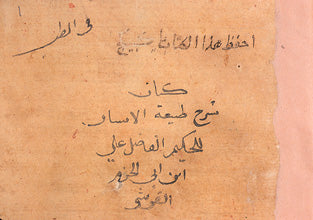
Revolution by the Ream
Paper, one of the most ubiquitous materials in modern life, was invented in China more than 2000 years ago. Nearly a millennium passed, however, before Europeans first used it, and they only began to manufacture it in the 11th and 12th centuries, after Muslims had established the first paper mills in Spain. The German Ulman Stromer, who had seen paper mills in Italy, built the first one north of the Alps at Nuremberg in the late 14th century.
The cultural revolution begun by Johann Gutenberg's printing press in 15th-century Mainz could not have taken place without paper mills like Stromer's, for even the earliest printing presses produced books at many times the speed of hand copyists, and had to be fed with reams and reams of paper. Our demand for paper has never been satisfied since, for we constantly develop new uses for this versatile material and new sources for the fiber from which it is made. Even today, despite the computer's promise to provide us with "paperless offices," we all use more paper than ever before, not only for communication but also for wrapping, filtering, construction and hundreds of other purposes.
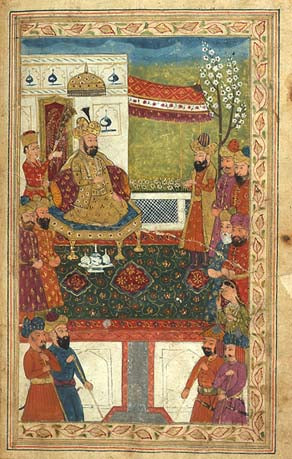
Scientific Inventions by Muslims
Inventions
Abul Hasan is distinguished as the inventor of the Telescope, which he described to be a Tube, to the extremities of which were attached diopters”.
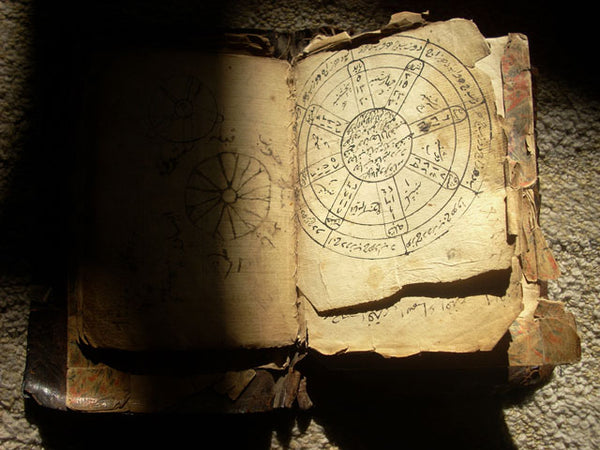
The Great Explorers of Islam
It was an Arab caravan which brought Hazrat Yusuf (Prophet Joseph) to Egypt. Moreover, the fertile areas in Arabia including Yemen, Yamama, Oman, Bahrein and Hadari-Maut were situated on the coast, and the Arabs being sea-faring people took sea routes in order to reach these places and fulfilling their commercial ventures.
